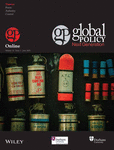The Architecture of Global Carbon Pricing Governance: Institutions, Functions and Policy Pathways
Authors: Dániel Muth, Mathieu Blondeel, Philipp Pattberg
In: Global Policy, 2025; 0:1–18
DOI: https://doi.org/10.1111/1758-5899.70078
Abstract
Carbon pricing mechanisms have proliferated across the world and have become a cornerstone of global climate action. This study maps and analyzes existing global carbon pricing governance institutions and initiatives. It creates a unique dataset encompassing 55 institutions, governance initiatives, and 16 specific programs aimed at encouraging broader adoption and stronger integration of carbon pricing in global climate action. The analysis focuses on the following variables: governance functions, location of headquarters, geographic scope, membership composition, thematic focus, and the initiatives’ relationships with the World Bank, United Nations, and the European Union. The analysis makes two significant contributions. First, it catalogs all major transnational carbon pricing governance initiatives, considerably expanding the scholarly understanding of how they operate and integrate into international climate policy. For example, the analysis shows that global carbon pricing governance is dominated by initiatives promoting voluntary carbon markets, with significant institutional overlap in governance functions and a high level of hybridization in terms of membership. The global diffusion of carbon pricing mechanisms further highlights the increasingly polycentric nature of global climate governance, leaving space for bottom-up, voluntary, and hybrid mechanisms. Second, a set of recommendations contributes to policymakers’ strategic objective of promoting carbon pricing mechanisms.




